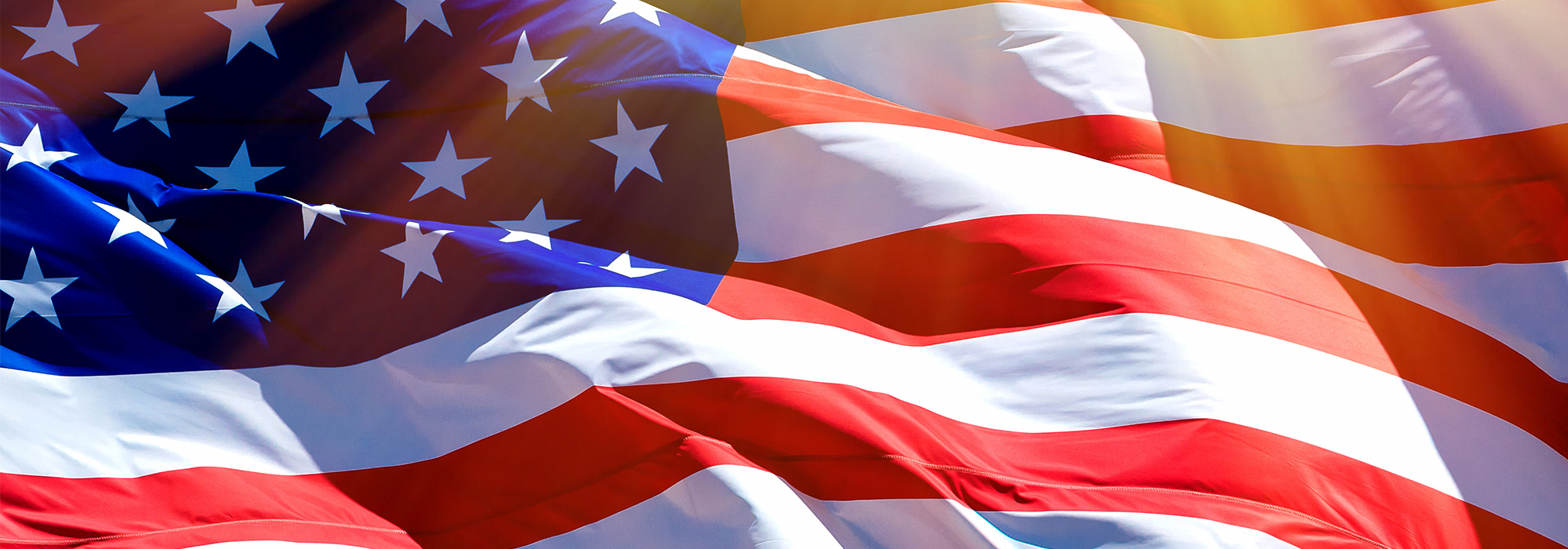
Standard & Poor’s long-awaited downgrade of the US credit rating was no surprise, but it does encourage reflection. The rating agencies are not people one should trust with the family jewels. Remember, their business has been to rate the paper of companies which pay them for rating their paper. They gave AAA ratings to mortgage-backed assets that wound up in the dumpster. But on this one, what S&P said makes sense: “The effectiveness, stability, and predictability of American policymaking and political institutions have weakened at a time of ongoing fiscal and economic challenges.” The downgrade issue isn’t the amount of debt but rather the mess in Washington.
It’s easy to blame the Tea Party. Certainly, the Tea Party Republicans in the House — joined with the larger group of rigid conservatives — used blackmail and denial as potent political weapons. And many Americans, notably his own supporters, are furious that President Obama did not fight back harder.
But this really isn’t the main problem. The fact is that the US governmental system works poorly. Of course, that is what the founding fathers meant it to do. As Carol Berkin observes in her marvellous book A Brilliant Solution: Inventing the American Constitution, the founding fathers were certain that “men were corruptible and that power always corrupted.” They feared that an efficient government would centralize powers and become tyrannical — what they saw George III doing. (The Declaration of Independence was directed to Parliament, as an indictment of the King.) To avoid this, they created a government system based on “checks and balances” — with more checks than balances — that would sacrifice efficiency to the preservation of liberty. Executive power in their Constitution was shared by a weak president (some felt a government could function well enough with no executive) and a Congress which itself was divided between two very different and jealous chambers, and this federal system was grafted on a decentralized alliance of states. (Remember, until the Civil War it was “these” United States, not “the” United States.)
The founding fathers were not particularly optimistic about their creation. Few would have dared believe that this document of patches and compromises would ever have been endowed with almost religious reverence. And from the very beginning, the institutions set up by the US Constitution had to be recast to make it work at all. George Washington created the presidency almost whole cloth; chief justice John Marshall defined the role of the Supreme Court during the 34 years he led through six presidencies from 1801 to 1835. It has always been, at best, a work in progress.
Dominated from the start by lawyers, the US political system encourages legalism and complexity (“the most complicated system of government on the face of the globe,” said John Quincy Adams) — too often, parliamentary procedure run amok. The governmental system reflected and shaped American politics. US politics would remain fragmented, localized and lacking (except in periods of national emergency) a clear central focus. The institutional arrangements make it difficult to form majorities and strengthen the power of “factions” in Congress. Unlike parliamentary systems where governments stand on a majority of elected representatives (“minority” governments exist by the assent of the opposition), in the US system, the US president must construct a majority in Congress for every issue. We constantly weigh the president’s “political capital” — his ability to sell a policy (his “bully pulpit”) or to buy it (his reservoir of appointments and pork). Watching American politics, pundits say, is like watching sausage making — not pretty but fascinating.
Over the years, the US evolved means to make the awkward system work. In extreme crises — for example the Civil War, the First and Second World Wars, the Great Depression — the president was given (or took) extreme powers. In such times of necessity, presidential power increased but always on a leash. Otherwise, the government lived and breathed by complicated, ongoing horse trading, log rolling, pork barrel politics and, in many decades, deep corruption. Periods of what Arthur Schlesinger called the “Imperial Presidency” have been interspaced with eras of what Joe Califano called the “Imperial Congress.” “The barons of Capitol Hill,” he wrote in New York magazine in 1994, “make it clear to any incoming administration where the true power resides.”
Unlike parliamentary systems where governments stand on a majority of elected representatives (“minority” governments exist by the assent of the opposition), in the US system, the US president must construct a majority in Congress for every issue.
For most of US history, however, these defects had little impact. The government, however inefficient, was small, the military minuscule, and taxes were low. Other than delivering the mail, Washington intruded minimally into the daily lives of its citizens. And America was rich — the Midas of the world economy, with massive resources, unlimited space and a population which included people from all over the world who had the courage to pull up stakes and try it across the oceans. The US had few foreign entanglements, heeding George Washington’s warning to avoid them. Even though the US was the world’s largest economy at the turn of the 20th century, it remained an insignificant player in global politics.
We can examine how the American system of government performed in three seminal cases when the nation faced a deep transformational issue.
With regard to slavery, the Constitution was flawed from the outset, and the government was unable to bring about a peaceful settlement. The system of government established by the Constitution broke down over the right of secession (the right of states to leave the union) which had been threatened earlier by the New England states. After the Missouri Compromise in 1820, it became clear that the slavery issue would explode the United States, either by fracturing it or by civil war. One wonders if, after that point, despite its enormous continental expansion and the remarkable growth of its economy, the US would have been viewed as a “failed state” heading inevitably toward a terrible catastrophe.
A second era of transformational change was the late 19th century, when the rise of the industrial economy overturned the traditional, deeply embedded small-business, small-town life. The localistic architecture of the governmental system failed to meet the needs of a society and economy becoming increasingly national in scope. Existing institutional arrangements combined with the professionalization of the political class inhibited all efforts to modernize government in the face of profound new demands. Violence for the most part was avoided and hardship endured, but Washington was unable to create an appropriate posture for the national government in this emerging world of big business, the beginnings of a national economy and widespread social turmoil. The government failed, it is argued, not because national governmental institutions were so weak, but rather because the fragmented, decentralized system was so strong. Only the Progressive movement at the turn of the century, crosscutting the Republican and Democratic parties, a series of three strong presidents and the lessening of intense party competition in Congress permitted government to be reshaped in ways the founding fathers could not possibly have conceived.
A third era of dramatic transformational change was in the years just after the Second World War, when the US, despite a profound desire to return to its inward-looking historical posture, reversed and in a remarkable series of decisions accepted a peacetime role in the Eastern Mediterranean, in the reconstruction of Europe with the Marshall Plan, and the creation of NATO — not to mention taking a much more active leadership role in the United Nations than it had ever considered for the League of Nations. Theodore H. White, writing in Fire in the Ashes soon after Dwight Eisenhower became the first Republican president in 20 years in 1953, tells how “Congress has been at war for some eight years with the executive leaders of the presidency” following on a decade and a half of bitter struggle over social policies. He explains how this split between Congress and the Executive weakens American foreign policy. Yet, as White states, the “two most positive expressions of American dynamism — the Marshall Plan and the North Atlantic Pact — were both expressions of Congressional determination and understanding.” More, he wrote: “Congress’s instant support of the two swift emergency gestures of the Executive — the Truman Doctrine and the intervention in Korea — were, again, illuminated with wisdom.”
How can we explain the devastatingly poor performance of the US government in the late 19th century and its spectacularly impressive performance after the Second World War? There was much less official corruption and a much improved civil service, to be sure. More important, the participants in the 1940s shared the trauma of depression and war. But the core institutions had scarcely changed. Government remained fragmented and localized, checked more than balanced, and passions were not less deeply held. Charges were hurled (this was the era of Joe McCarthy), opponents denounced and fists clenched.
But this time it was different.
I asked the head of one of America’s most prestigious think tanks this question. His response was that the quality of leadership, not changes in institutions, determined the difference in performance. In this system characterized less by imperial presidents or imperial Congress but rather by, in Richard Neustadt’s term, intertwined powers, no one can accomplish very much without the acquiescence of the other. In Presidential Power and the Modern Presidents, Neustadt wrote, “The stage is set for that great game, much like collective bargaining, in which each seeks to profit from the other’s needs and fears. It is a game played catch-as-catch-can, case by case. And everybody knows the game, observers and participants alike.” But those involved have to be both able and willing to play the game.
Thinking about this, I found a few lines Alexis de Tocqueville wrote in Democracy in America which make much the same point: “In the constitutions of all nations, of whatever kind they may be, a certain point exists at which the legislator must have recourse to the good sense and the virtue of his fellow citizens. This point is nearer and more prominent in republics, while it is more remote and more carefully concealed in monarchies; but it always exists somewhere. There is no country in which everything can be provided for by the laws, or in which political institutions can prove a substitute for common sense and public morality.”
The most important fallout of Washington’s exasperating, infuriating public performance over the debt ceiling is not the S&P downgrade. Given the lack of safer havens, investors continue to put their money into US treasuries. The real casualty is the trust Americans feel in their government, which further swells the number of those who are turned off and angered by the whole show. Unfortunately, this isn’t new. In general, American distrust in government has been increasing for decades. One reason, of course, is its complexity. For many Americans, how government works — or doesn’t work — is completely incomprehensible. Now, facing bigger and harder issues, profound changes in our economic system and social structure, the government looks helpless and stupid. It is understandable, though sad, that many now feel that government is the main source of problems and that a leading candidate for president commits himself to making the US government “irrelevant.”
If the institutions of government established by the US Constitution purposely fragment power and hinder efficiency, if they increase complexity in the interest of checking the possibility that one element of government can gain control of the entire system, then the quality of common sense and public morality among legislators and their ability and willingness to play the game that awkward governmental institutions lay out is the key factor in determining how well America deals with the issues that confront it. If this quality of leadership explains the difference in the performance of the US government in these two periods of tremendous change, then one can bet that the going will be tough indeed as Americans skate out on the thin ice of another era of profound change in the US economy and society.
Photo: Shutterstock







